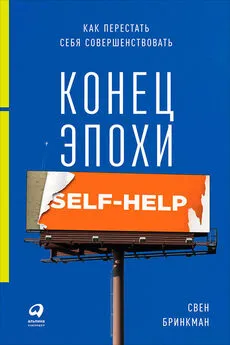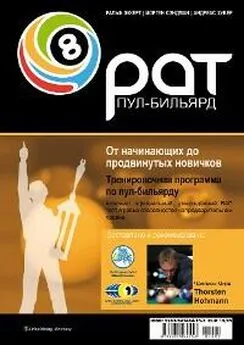Steve Andreas - Help with Negative Self–talk Volume I
- Название:Help with Negative Self–talk Volume I
- Автор:
- Жанр:
- Издательство:Real People Press
- Год:2009
- Город:Boulder
- ISBN:нет данных
- Рейтинг:
- Избранное:Добавить в избранное
-
Отзывы:
-
Ваша оценка:
Steve Andreas - Help with Negative Self–talk Volume I краткое содержание
Negative self-talk makes people feel bad. These bad feelings are the trigger for a huge variety of problems and difficulties, including...
Most eating disorders, Alcohol and other substance abuse and addictions, Anxiety and panic disorder, Anger and violence, Depression, Procrastination, Self-confidence & self-esteem issues
...the list goes on and on.
Often the people who suffer from these problems don’t realize that they are caused by inner critics, internalized parents, and other troublesome inner voices because they are so focused on the horrible feelings that result from them. Sometimes this negative self-talk is playing constantly in the background, like a song stuck on repeat!
It is very difficult to directly change an unpleasant emotion, but often quite easy to change an inner voice. When the voice changes, the feelings usually change with it, allowing for a more resourceful response to life's challenges.
By learning how you talk to yourself, you can easily learn new and more helpful ways to do so.
Help with Negative Self–talk Volume I - читать онлайн бесплатно полную версию (весь текст целиком)
Интервал:
Закладка:
2. A methodology or theory, a set of understandings that guide the further development and use of the technology. Methodology consists of all the ideas we have about the technology, how we think it all fits together. As Einstein said, "There is nothing so practical as a good theory"
One basic principle — well established by a wealth of psychological experiments — is that we can't know objective reality, we have only a "map" of reality provided through our senses. This principle was stated by Alfred Korzybski in his book Science and Sanity as, "The map is not the territory." There will always be gaps, errors, and omissions in our map. A map may be very useful and practical, but it can never fully match the reality that it attempts to describe. If it did match, it would be as complete, complex, and puzzling as the reality it describes, and it would no longer be useful as a map.
3. An epistemology, how we know what we know, a way of deciding what evidence to use to use to determine what is true or valid as we test both the technology and methodology. The epistemology of physics is that of scientific experimentation: testing our predictions and results in any way we can, with as many controls as we can. This testing is what distinguishes science from guesses, revelation, or superstition.
The Three Different Aspects of NLP 1. Technology
Like physics, NLP also has a large number of specific patterns, recipes, and instructions that can be used to help people reach specific outcomes. It does this by making changes in our experience — in our perceptions, our thinking, our actions, and our feeling responses to events.
Educational applications include teaching people how to spell accurately, how to learn a foreign language quickly and fluently, how to remember facts and rules, how to be in a positive state to learn easily, and how to transform some kinds of "learning disabilities" into effective thinking and learning, etc.
Psychotherapeutic applications include how to transform unpleasant feelings, change unwanted habits such as smoking, overeating, or nail–biting, how to cure phobias, fears and anxieties, resolve grief, shame, guilt, and other internal conflicts, eliminate addictions, compulsions, PTSD, etc.
Communication applications include how to use language — both denotation and connotation, and both explicit and metaphoric — to sequence and combine information for easy learning, and accurate transmission of that learning to others, how to develop rapport, how to negotiate and resolve conflicts, how to become intimate when you want to, and how to set effective boundaries, etc.
Sports applications include how to be motivated to stay with a training program, concentrate fully on performance and ignore distractions, how to acquire excellence in any sport, how to use the same thought and movement strategies that top athletes use to achieve success, etc.
Business and organizational applications include how to develop creative new alternatives for solving problems, make satisfying decisions, and detailed plans to implement them, how to stay on track in meetings, how to identify and select potential employees and partners who have the skills needed for the team, how to dovetail outcomes, how to manage in a style that matches your company and employees, etc.
2. Methodology
NLP has a coherent set of ideas or understandings that can be used to understand the wide–ranging applications of the technology.
Modalities
One basic understanding in NLP is that all our experience consists of either sensory–based experience in the moment, or internal representations of sensory–based experience that are remembered from the past or forecast into the future. We can't know the world directly, only through the representations of the world that we build out of what we receive through our senses. These representations will always include one or more of the following five sense modalities: visual images, auditory sounds, kinesthetic feelings, olfactory smells, and gustatory tastes. While the last two modalities are very important in food selection, cooking, and certain other contexts like personal hygiene or perfume manufacturing, most of our thinking and responding is some combination of the three major sense modalities, visual, auditory, and kinesthetic.
These sensory modalities are the building blocks, or the "atoms," of all our experience. Even our most abstract words and conceptualizations are composed of some combination of images, sounds or feelings. These different modalities can be combined simultaneously in a moment in time, or they can be combined in a sequence, rather like a linear computer program, in which, for instance, an image of a singer is followed by the song that they are singing, followed by our feelings in response to those sounds. We can learn how to voluntarily rearrange these "atoms" of experience in order to resolve problems, and reach the outcomes that we want. Let's examine one practical application of this methodology, learning how to spell.
Applying the Methodology of Modalities to Technology
Spelling is a simple rote memory task in which the outcome is to be able to access a correct sequence of letters in response to the sound of a word (or in response to an image of what a word indicates). Once that is done, the word can be
written out, or the sequence of letters can be spoken, as in a spelling bee. A poor speller will typically use one of two methods that do not work well:
a) Creative Speller will try to construct a visual image of the word to be spelled, using creative visual imagery, instead of using remembered imagery to visualize the word exactly as they have seen it in the past. Most right–handed people look up to their left to access the right hemisphere of their brain for visual memory, and look up to their right to access the left hemisphere of their brain for creative visualization. Creativity is a wonderful ability to rearrange experience and develop new possibilities, but it is not appropriate for spelling, because spelling is a rote memory task that requires not being creative.
b) Some people will try to sound out a word auditorily, in order to elicit the letters in response to the sounds in a word. In English this is impossible for about 40% of words, because our very strange spelling makes it very difficult to reliably sound them out. Despite this, many schools attempt to teach children how to spell by sounding out words auditorily, a method called "phonetics," a word which ironically can't be spelled phonetically!
Phonetics works well for reading, which requires going from the written word to the spoken word. But that is a different task than spelling, in which you have to do the reverse, and go from the spoken word to the written word. In Spanish, all words are written exactly the way they sound, so spelling auditorily works well, and is not a problem in school — it is almost impossible to find a bad speller in a Spanish–speaking country.
Accurate Spelling. The technology of teaching children how to spell well is ridiculously easy. You simply tell the child to look at the word written on the blackboard, and then to close their eyes and look up to their left to see an internal remembered image of the word, and then notice a feeling of familiarity that lets the child know that they have seen that word before. Then they only have to copy their internal image of the word onto the paper, or read out the letters if they are in a spelling bee. Even in Spanish this is more effective than sounding out the letters, because it is much faster to get a visual image of a word than it is to listen to the sequence of sounds. For more about the NLP spelling strategy and how to learn or teach it, read (1, ch. 2).
Submodalities
A further development of NLP methodology is the realization that each of the primary sensory modalities can be subdivided into smaller parameters or elements, called submodalities, each of which can also be changed to alter our experience. If modalities are the "atoms" of our experience, submodalities are the "subatomic particles" of experience that make the atoms of experience have significantly different properties.
A visual image can vary in distance from the observer, location in space, and size. It can be flat (2–D) or 3–D (holographic), framed or panoramic, bright or dim, moving or still, color or black and white. You can be inside a memory as if an event were happening again, or you can see it as if you are an outside observer watching someone else experience that event; the same is true of your images of the future — you can be in them, or you can see yourself in them. A visual memory that is a large, close, 3–D, color panoramic movie will be much more impactful than one that is a small, distant, two–dimensional framed black and white still photograph. You can easily confirm this in your own experience by representing the same memory in those two different ways.
An auditory sound can also vary in distance from the listener, location in physical space, and loudness. It can be monaural or stereo, vary widely in tempo, tone, timbre and frequency range, and you can hear it by being inside that panoramic experience again, or being outside it, as if you were hearing it coming from a tape recorder or CD player. A sound that is loud, close, full, and panoramic will be much more impactful than one that is faint, distant, and coming from a point source. Again you can easily verify this in your experience by recalling a piece of music in both ways, and notice the difference.
A kinesthetic feeling can vary in intensity, duration and location. It can vary in temperature, pressure, texture, and extent. It can be still or moving — spreading from one location to another. It can be a surface tactile feeling or an inner emotional feeling. A remembered feeling that is intense, moving, and involving the whole body will be much more impactful than one that is weak, still, and involves only a very small part of your body. Again you can try this out in your own experience to verify that it is true by remembering the same feeling in both ways.
Modalities offer three alternative ways to represent experience, offering choice. Submodalities offer hundreds of different alternatives, which can be combined in various ways to create hundreds of thousands of alternatives, for even more choice. Let's examine a few practical applications of this methodology.
Applying the Methodology of Submodalities to Technology
OverwhelmWhen we are not happy about something in our life, and conclude that we "have a problem," often a major aspect of what is happening is overwhelm or confusion resulting from information overload. There is too much information, or it is coming too fast, for us to process it well. Imagine trying to pay attention to six people talking to you at once, and you will have a taste of one kind of overwhelm, but for some people it is even worse. Often someone may have a half–dozen movies playing in their minds simultaneously — large, close, and in bright color and loud sound. This is also true of some people who suffer from ADHD and other learning difficulties. With all those movies happening at once, it
Читать дальшеИнтервал:
Закладка:









